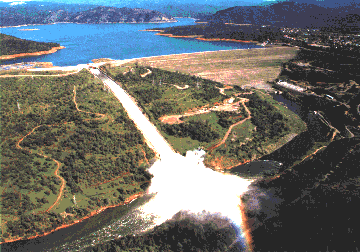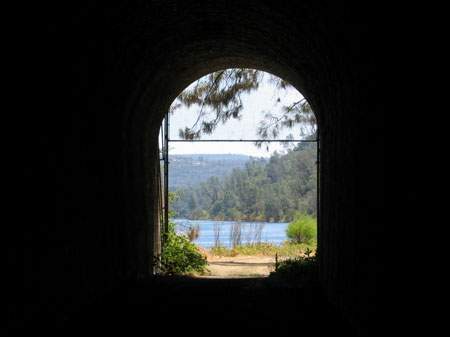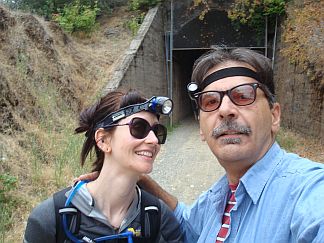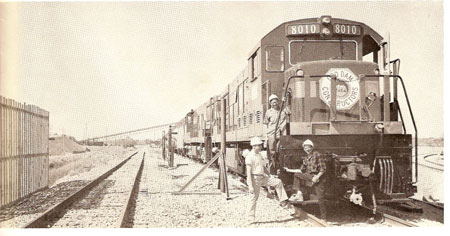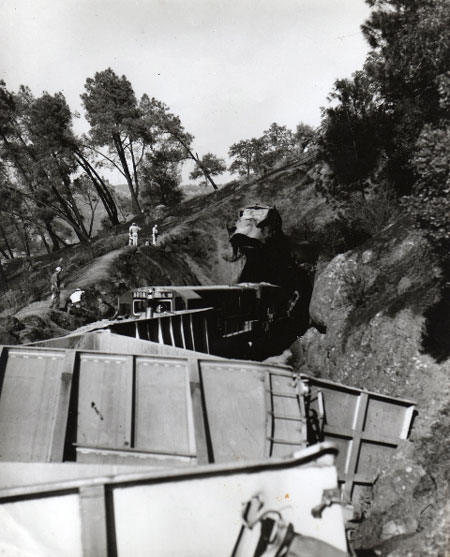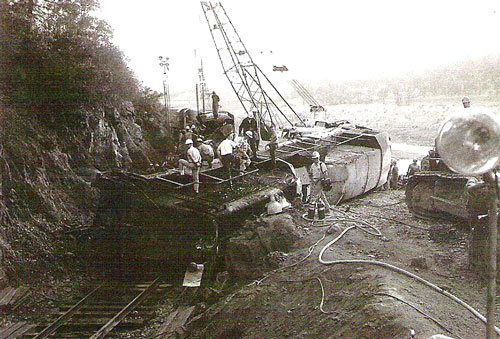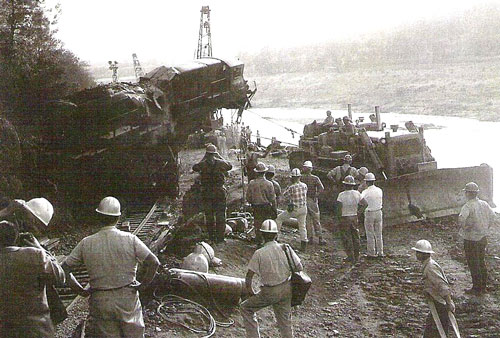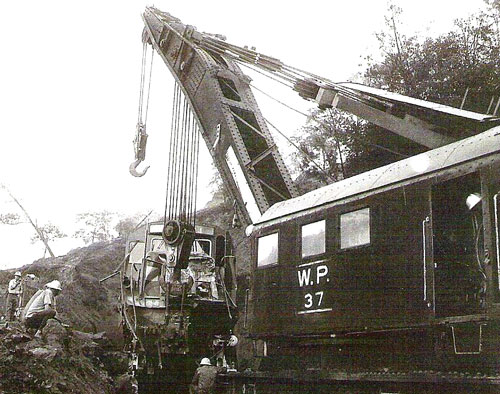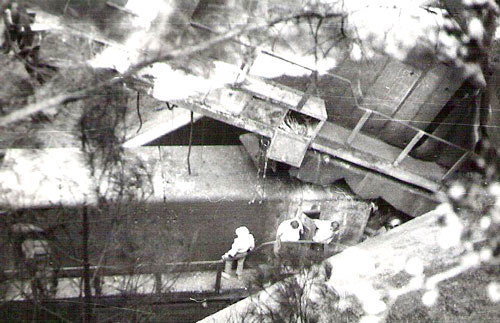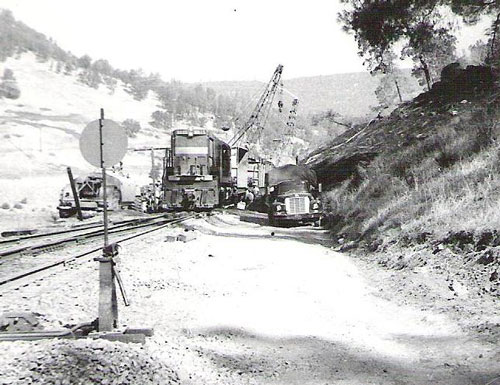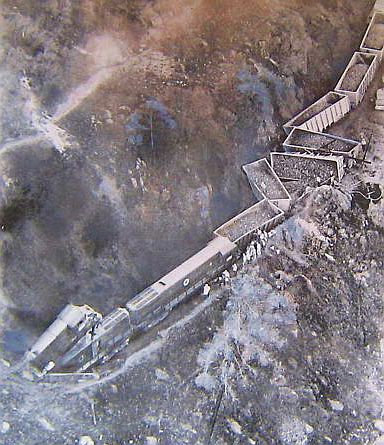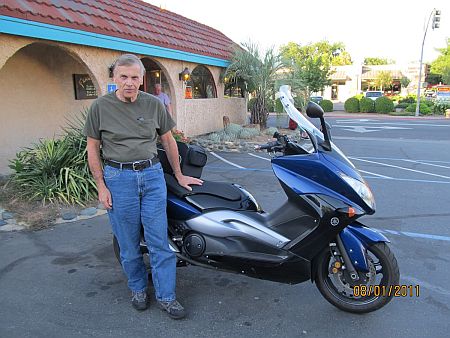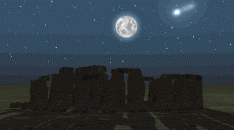
THE OROVILLE DAM TRAIN TUNNEL COLLISION

THE OROVILLE DAM TRAIN TUNNEL COLLISION
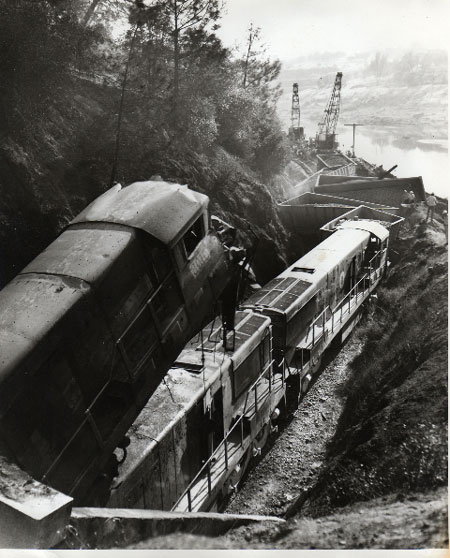
The dam is the highest earth fill dam in the United States and is located 9 miles northeast of Oroville, California.
There were many accidents related to the dam's construction. However, the one that has always stood out in my mind was the one documented here. I remember going to look at it from across the river the next day. I was just a teenager when it happened but the horror of it has always haunted me - even after more than 45 years.
This web site was inspired by a vivid, decades old memory in 2002. In the following years it has expanded into something that I am very proud of. 90% of the material here came from those who had kept the old information in personal collections and were very enthusiastic about donating it to me. I am most grateful to those who have contributed their photos and memories into the construction of this site. Their contributions have allowed me to recreate the history of the Oro Dam Railroad and of the terrible collision that occurred.
The e-mails I have received from family members of those who passed away in the accident have been very inspirational.
Larry R. Matthews

SECTIONS
1. Pre-Accident History
2. Thursday, October 7, 1965 - 8:30 P.M.
3. The Tunnel 40 Years Later
4. The Monument
5. Thanks Section With E-mails, Additional Photos and Directions to The Tunnel
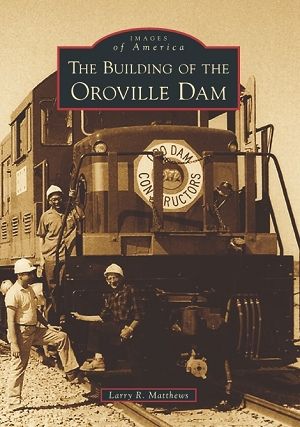
My new book includes a chapter on the Oroville Dam Train Tunnel Wreck. It was published the week of January 20, 2014.

1. PRE-ACCIDENT HISTORY
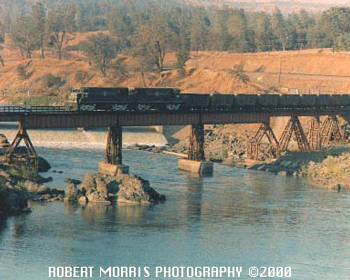
A Dam Fill Train makes it's way South near the Feather River Fish Dam after dumping its load at Oroville Dam. This bridge no longer exists.(Circa 1965)
Another photo of the Dam Fill Train on its way from the dam. The route from the borrow area to the dam crossed the Feather River three times. This trestle was located just north-west of Oroville and no longer exists. (Circa 1965)
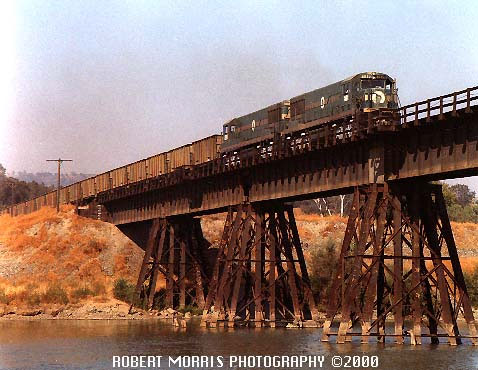
The tunnel and the rail roadbed were constructed by the Western Pacific Railroad in 1909. This was part of the major railroad project to link California with the East, through the Feather River Canyon.
In the 1860's the United States had been linked together by the hard work of the Union Pacific and the Central Pacific railroads. However, by 1890 the Union Pacific Company had become disenchanted with the railroad route over Donner Summit. The 7,200 feet elevation with its deep snows was a great obstacle to uninterrupted services.
For many years survey and construction work went ahead. By 1909 the work was completed and freight service through the Feather River Canyon began. Then in August of 1910, passenger service over the new route began. The west-facing entrance of the tunnel bears the year 1911.
Within 50 feet of where the tunnel was constructed lay the biggest mining failure of all time. Between 1892 and 1897 Major Frank McLaughlin, and his British backers, had spent $12,000,000 in constructing a dam, stone wall and flume to divert the Feather River so that gold could be mined out of the river bed. This project has the notoriety of being the first construction project where electricity was used to illuminate the work - provided personally by Thomas A. Edison!
Surprisingly, very little gold was found. However, McLaughlin made money on the deal and his British backers took the loss. He, his wife and child Aggie moved into a large estate named Golden Gate Villa in Santa Cruz.
But his wife died and exactly two years later on November 17, 1907, McLaughlin shot his daughter in the head and then drank a cocktail of strichnine and lemon juice. So maybe McLaughlin ended up paying for the fiasco after all.
Prior to his leaving the area, on November 1, 1897, McLaughlin blew up the enormous dam and wooden flume. But an equally large explosion was later to rock the walls of the adjacent hills.
The rock wall, running the length of two miles and also making that 90 degree turn to the East, is still there but it is submerged by the waters of the Thermalito Diversion Dam and cannot be seen.
A view of McLaughlins Chinese Wall, circa 1964. Just before the water inundated the wall. (photo by Ora Matthews)
Another view of the Chinese Wall. This was later in 1964 with the wall almost covered. (photo by Ora Matthews)
By the late 1950's the tunnel and roadbed were not used for their original purpose. But with the plan for the monumental construction of the Oroville Dam, it was determined that the roadbed and the tunnel would be used as a conduit for all of the rock construction material that would be used to form the enormous project.
The plan was for rock from the old dredger tailings west of Oroville to be transported by train, past Oroville, through the tunnel and on up the south side of the Feather River to be placed on the dam. The trains would dump their loads and then return down the same route to refill their cars.
The trains ran 24 hours per day, six days a week, for years. It was a very efficient method, until.........

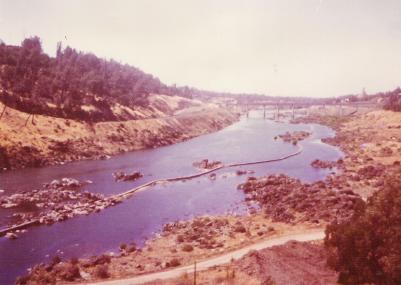
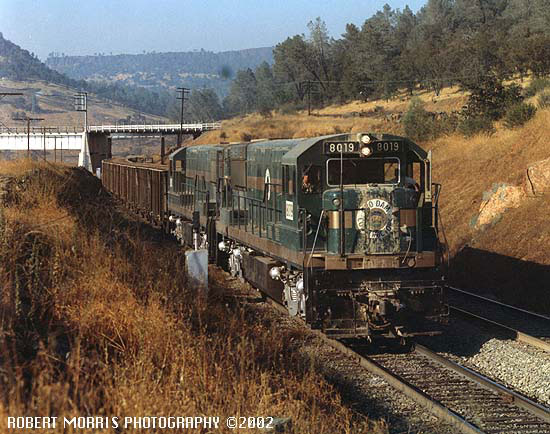

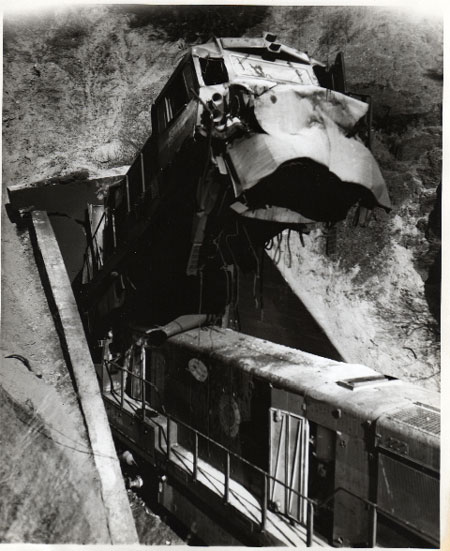
The collision site the next morning.
State and contractor officials theorize that the locomotives on the southbound train had just cleared the portal of the tunnel when they were rammed head-on by the northbound train. The heavily loaded northbound train rammed #8010/8011 upward and backward until it was slammed into the top of the tunnel.
In the grinding collision that ensued the lead engine of the empty train was lifted from its tracks, sheared off the cab of the northbound lead engine and was wedged into the arched portal of the tunnel.
The impact ignited nearly 10,000 gallons of diesel fuel that produced a huge billow of flame. Each of the diesel units had a capacity of 2,500 gallons of fuel and were kept constantly filled.
The fire destroyed the airborne engine and the northbound engine that was crushed down.
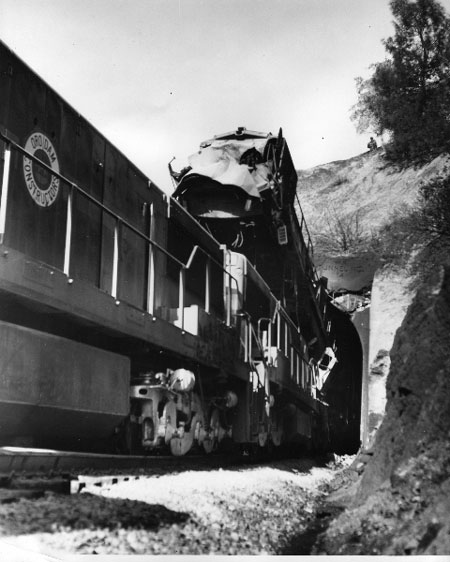 ">
">
A pall of smoke hung heavily over most of the area for most of the night. The cloud was visible in the moonlight before midnight as a grey cloud from 10 miles away.
Two of the victims were trapped in the wreckage of their locomotives. A third was found inside the tunnel and the fourth had apparently tried to leap from an engine but was crushed between two hopper cars.
The next morning crews began to remove the debris. It took 6 days to put the area and track in shape and it wasn't until October 13th when operations returned to normal.
A person interviewed the next day testified that he was traveling down Cherokee Road, located across the river from the tunnel. He said he saw flame flash from both ends of the 600 foot-long tunnel when the collision occurred.
Later investigation theorized that the collision was the result of the loaded northbound train running the red signal at the end of the siding and not waiting for the empty train that was nearing the tunnel.
Both front engines #8010 and #8016 were totally destroyed. The following engines #8011 and #8014 were reconditioned and back in service by June 1966.
The trains then ran on schedule without incident until October 5, 1967 when the final two cars were dumped onto the dam. How many train loads did it take to complete the dam? 41,315!
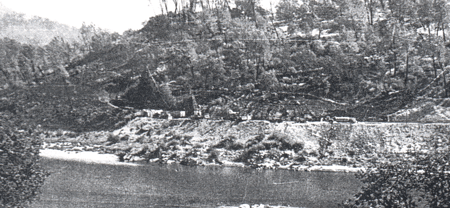
The scene I saw the morning after from across the Feather River - the tunnel and the wreckage.


The scene of the accident. Scott Roberts at the North-facing tunnel entrance on July 17, 2004.
I have visited the tunnel many times over the past 45 years. It sits in a lovely area across from Table Mountain and along the old river bed of the Feather River that has been backed up into a narrow lake by the Thermalito Diversion Dam since 1967.
The old railroad bed is now a hiking/biking and equestrian trail. As a matter of fact as you get to the entrance of either end of the tunnel there is a light switch you can turn on to light up the interior of the tunnel so you can see your way through its 600 foot length.
The tunnel is part of the Brad Freeman Trail that can be accessed from the end of Lakeland Blvd. From that trail head you can bike or walk the 3.5 miles through the tunnel and right on to the Oroville Dam Spillway area. What a great trip!
Spooky....
The last time I rode a bicycle through the tunnel was on June 1, 2008 and it still spooked me. The 90 seconds it took my wife and I to ride through it seemed much longer.
I am not supersitious but if there ever was a place that looked and felt haunted, this is it! - and maybe it has EVERY REASON to be!
Me on my July 17, 2004 visit to the West-facing tunnel entrance.
My wife Sharon at the West facing tunnel on June 1, 2008.
The North facing tunnel on June 1, 2008......
....and on October 8, 1965.


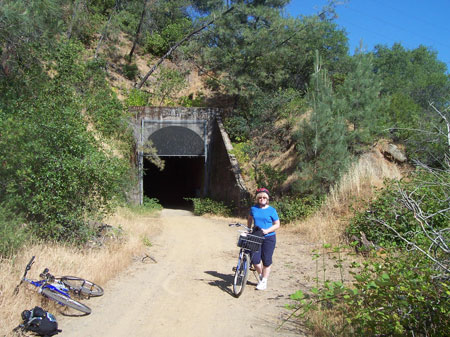
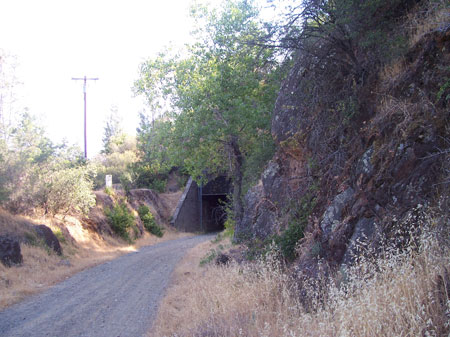
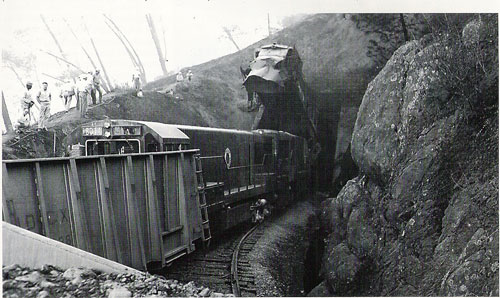

On May 6, 2001 a monument was placed atop Oroville Dam in commemoration of the 34 men who died on the dam and in related projects. The monument cost about $5,000.00 to complete and had been a labor of love for many. Thanks to Stu Shaner of Oroville and a lot of others. Their dedication and efforts have made sure that all who died in the construction of the dam will not be forgotten.
For many years after September 11, 2001, access to the monument became difficult. It sits atop the spillway area of the dam and, due to increased security, you could not park there. So you had to walk quite a distance from either end of the dam, or have someone drop you off, to visit the monument.
The Oroville Dam spillway crisis in February 2017 brought many improvements to the dam. They also included the fact that parking is now available and anyone can now park and visit all of the monuments near the top of the spillway. All of them are well worth your time to visit.
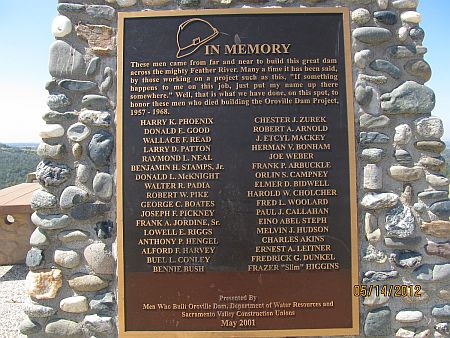
The Memorial Plaque atop Oroville Dam.
The monument to all of those who helped build the dam is the Oroville Dam itself. Without everyone's great efforts this 770 foot high colossus that has been such a great asset in flood control and in providing water and power would not exist. It has probably saved millions of dollars in flood damage and, most probably, many lives. The dam is 6,920 feet wide and comprises 80 million cubic yards of rock fill. A two lane highway could be constructed around the earth with the volume of the dam.
The Oroville Dam at high water level with the spillway in operation.
5. THANKS SECTION WITH ADDITIONAL PHOTOS, E-MAILS AND DIRECTIONS TO THE TUNNEL
THANKS FOR THE E-MAILS!!
I want to thank Lorenda Hensley and Ryan Berryman, both of Gridley, California for their e-mails in March 2006. They are the daughter and grandson, respectively, of Paul Callahan. They had very nice things to say about this web site. I understand that they have forwarded this site to various other relatives for their review. I am very glad to know that this site serves as an appreciated monument to those who passed away in this incident.
March 11, 2009:
"Thank you so much for putting this together! What amazing history lies all around us! We have lived in Magalia for 30 years & never heard about this train wreck! Thank you for all your hard work in the pictures as well as the information.
If History class was this exciting when I was in school, I would have been such a better student!! I sent this web site to everyone in my email address & some have already responded that they loved your website as well! It's in my Favorites & I look forward to learning more!
I really appreciate it!"
Thank you!!
Dixie Helberg, Magalia, CA
March 20, 2009:
"What a great web site. Very well done and extremely informative."
Thanks,
Rich Reed, Chico, CA
March 6, 2010:
"Simply wonderfully done! My brother-in-law Don Ekman worked on the computer aspect of the dam in 1967. He and my sister honey-mooned at the dam! So this excellent web site and all of the information is especially interesting to me. I have lived in Paradise, CA for 30 years and feel a kinship to the Oroville Dam. Thank you for the wonderul job done here for all of us to read!"
Pati Jean Diridoni,
Paradise, California
March 25, 2010:
"Thank you for the excellent website on the Oroville Dam Accident. George Boates was married to my Grandmother Rachel and was a wonderful man. I remember him most for his beautiful smile and gentle, loving personality. His death was a great loss."
Carol Archdeacon
December 30, 2010:
"Thank you so much for putting this information together. I am Darlene Woolard Smith, the granddaughter of Fred Woolard. My father LaVaughn Woolard went out to the scene to identify my grandpa. I was told about his death but this information really helps me understand how he died. I will save this and pass it on to my children. Thank you so much!"
Darlene Woolard Smith,
Joplin , MO
April 4, 2011
"Most of my childhood was in Oroville until I moved away to join the Navy in 1980. My sisters and brothers with their children still live there and I make it back every once in awhile. My father and stepfather worked on the Dam from beginning to end. The train wreck you write about I remember it. Although I was only 5 years of age I remember the great fire from the wreck. Being that age I dont remember much about it but I do remember we drove up across from the wreck and the saw it. Thank you for the wonderful website and the information."
Joe Hill, Norfolk, VA
July 13, 2011
"My daughter and I hiked the tunnel today. Great weather, cool and comfortable. Neither of us was disappointed. We have hiked the Biz Johnson trail and thought this was every bit as fun. We saw some hawks and geese, picked blackberries for a snack and just had a nice relaxed time. I'm sending you a picture of us at the tunnel entrance. We chose to use headlamps to increase the "spooky factor" of the tunnel.
I'm still looking over your other sites and have been sharing them with the family. Everyone is enjoying them. I'm sure glad I stumbled on to your pages. By the way, I'm a fellow "69er". I graduated from Alameda High School in 1969.
Thanks again for everything and take care."
Patrick Goodeill, Chico, CA
July 22, 2011
"I was either 6 or 7 years old when this accident happened. My dad was a supervisor for Bigge and I frequently rode with him in his Bigge blue El Camino pickup to the jobsites as the dam was being built. Bigge was a heavy haul company and set all the heavy equipment in place at the bottom of the dam as it was being built. He had access that not many people had.
Dad knew someone who was in charge of the railroad operation and he and I got a ride on the train from the quarry all the way up to the dam for the dump and back. I can still remember the blast of cool air as we entered the tunnel.
When this accident happened, we drove on a road that was across the other side of the feather river and we could see the hopper cars all mangled up and strewn about. I believe it was the next day after the accident. I am not certain whether or not Bigge helped with the cleanup and removal of the cars and engines.
We left Oroville in 69 after the project was finished and Bigge moved us to San Leandro.
Thanks again."
Jan Zanutto, Fresno CA
August 12, 2011
"I just wanted to say thanks for sharing the great photos and story of the train collision, as a third generation "Orovillian" I have a lot of family history that revolves around Oroville and the construction of the Oroville Dam. My maternal grandfather "Herman Victor Bonham" was one of the men killed during the construction of the dam in 1961. He also attended Oroville HS and was a member of the Block "O" club who put the "O" up on Table Mountain. My paternal grandfather "Herbert Willis Brewton Sr." was a miner and was one of the men who did the recovery, cleanup, and repair of the tunnel after those trains collided and is in one of those pictures, he also worked on the construction of the spillway, and he and my father worked on the construction of the fish hatchery, and my uncle on the canals of the diversion pool. I have been to the old train tunnel numerous times since I was a teenager and am now 40 years old and have taken my son there telling him about the train wreck, and now have the pictures to share with him thanks to your website. Thanks."
David Brewton, Oroville, CA
January 19, 2012
"Thank you so much for your site about the Oroville train wreck. I found it while I was trying to add stopovers to my road trip from San Mateo to Weaverville. I was not familiar with Oroville, the dam, or the train wreck, but your writing was so intriguing that I felt compelled to pay a visit. This Monday I followed your instructions and took Lakeland Blvd towards the end where a gate is located. From the gate I was able to follow the BF trail to the tunnel. My kids (8 and 5) and I all enjoyed the short hike to and through the tunnel.
I am genuinely fascinated by towns, buildings, and sites that have a story to tell. For the past year and half, I have visited over a dozen of ghost towns and old mining towns in northern California. It's not the ghost factor, but the history, i.e., the then-and-now, that I find most interesting. The tunnel trip made me realize that there is still a lot more to explore. Thanks again!"
Shannon Kwei, San Mateo, CA
ADDITIONAL PHOTOS
Oro Dam Train #8010.
The Morning After - October 8, 1965.
"Clean up" photo from October 9, 1965 courtesy of Charlie Jensen.
"Clean up" photo from October 9, 1965 courtesy of Charlie Jensen.
"Clean up" photo from October 9, 1965 courtesy of Charlie Jensen.
"Clean up" photo from October 9, 1965 courtesy of Charlie Jensen.
"Clean up" photo from October 9, 1965 courtesy of Charlie Jensen.
SPECIAL THANKS
I want to thank Stu Shaner for the use of his archives in the construction of this web page. I also want to thank Robert Morris for the use of his beautiful color train photographs. Check out Robert's web page link below!
I want to thank John Mistler for publishing an article I wrote based upon this web site on March 3, 2004 in the TERRITORIAL DISPATCH, Marysville, California.
On March 30th, 2006 the Oroville Mercury Register newspaper produced a special supplement to the paper called "OUR TOWN - 100 YEARS OF OROVILLE".
Fortunately for me, and thanks to the editors of the paper and reporter Bridget Bowers, I was able to participate in the honoring of the 100th Anniversary of Oroville, a town I still hold near and dear to my heart.
Bridget produced an article for the supplement based upon this web site. It turned out very well. It was factual and quoted this site and even me! Thanks to all involved for your efforts!
Thanks go out to Sean Carnahan of Reno, Nevada. In June 07 he provided me with more detailed information and photos regarding the wreck. Some things I didn't even know existed! Thanks Sean!
Thanks also to Ken Anderson, who in February 2009 sent me the highest quality photos of the train wreck that I have ever seen. They are included in this site. His father worked on Oroville Dam.
Thanks to Charlie Jensen and his wife Judy of Oroville who I spent several fascinating hours with on 3-13-10 going over this accident and a lot of Oroville history. Charlie was there that night right after the accident and helped with the clean up for two days. He worked on construction of Oroville Dam and the Thermalito Diversion Canal from 1965 through 1967. He also contributed photos that were taken of the recovery and clean up.
Additional thanks go to my friend, and big "Oroville History Fanatic", Rick Kellogg for analyzing every intricate detail of this web site and keeping me accurate! The below photo was taken on August 1, 2011 in front of Francisco's Restaurant. Rick is showing off his Yamaha Tmax.
#8010 in November 1965
DIRECTIONS TO THE TUNNEL
Recently I have received several e-mails from readers who wanted directions to the tunnel. Here they are:
From downtown Oroville, head east on Montgomery Street (It turns into Orange Avenue). Turn left on Long Bar Road. Turn left on Colina Way. Turn Left on Pinemont St. Turn Right on Lausen St. Turn left on Lakeland Blvd. Go to end of paved road. A few feet past the paved road you will see a dirt road on the right. Hike around the gate and go down the hill (you can either hike or bike). When you get to the railroad bridge veer right and just follow the shoreline. You can't miss it. Additionally, there are several "Trailhead" signs to follow that may be of assistance to you.
THIS IS A "LARRY" WEB SITE.
Please check out my other web sites at:
If you have comments about this web page, please E-Mail
Larry Matthews
at:
This web site was established January 22, 2002.
This web site was last updated on June 2, 2024.
